secret service
 There have been many firsts that our United States Presidents have been able to celebrate. One such first was “the first president to ride in a helicopter.” That particular first honor went to a well-known general turned president…Dwight D Eisenhower. On July 12, 1957, President Eisenhower became that first United States president to fly in a helicopter when a United States Air Force H-13J-BF Sioux, serial number 57-2729 (c/n 1576). The helicopter was piloted by Major Joseph E Barrett, USAF. It departed the White House lawn for Camp David, the presidential retreat in the Catoctin Mountains of Maryland. Of course, no presidential trip happens without a Secret Service agent, also on board. On that same day, a second H-13J, 57-2728 (c/n 1575), followed the first, this one carrying President Eisenhower’s personal physician and a second Secret Service agent.
There have been many firsts that our United States Presidents have been able to celebrate. One such first was “the first president to ride in a helicopter.” That particular first honor went to a well-known general turned president…Dwight D Eisenhower. On July 12, 1957, President Eisenhower became that first United States president to fly in a helicopter when a United States Air Force H-13J-BF Sioux, serial number 57-2729 (c/n 1576). The helicopter was piloted by Major Joseph E Barrett, USAF. It departed the White House lawn for Camp David, the presidential retreat in the Catoctin Mountains of Maryland. Of course, no presidential trip happens without a Secret Service agent, also on board. On that same day, a second H-13J, 57-2728 (c/n 1575), followed the first, this one carrying President Eisenhower’s personal physician and a second Secret Service agent.
While that first flight was really a pleasure ride, the main purpose of the helicopter was to rapidly move the 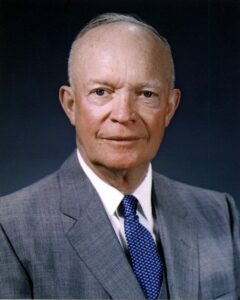 president from the White House to Andrews Air Force Base where his Lockheed VC-121E Constellation, Columbine III, would be standing by. This was intended to be a way of escape to Andrews or to other secure facilities in case of an emergency. Major Barrett was selected as the pilot because of his extensive experience as a combat pilot. They needed someone who was a capable pilot under pressure, a skill that Major Barrett proved he possessed during World War II, when he flew the B-17 Flying Fortress four-engine heavy bomber. Major Barrett was credited with carrying out a helicopter rescue 70 miles behind enemy lines during the Korean War. For his heroics, he was awarded the Silver Star.
president from the White House to Andrews Air Force Base where his Lockheed VC-121E Constellation, Columbine III, would be standing by. This was intended to be a way of escape to Andrews or to other secure facilities in case of an emergency. Major Barrett was selected as the pilot because of his extensive experience as a combat pilot. They needed someone who was a capable pilot under pressure, a skill that Major Barrett proved he possessed during World War II, when he flew the B-17 Flying Fortress four-engine heavy bomber. Major Barrett was credited with carrying out a helicopter rescue 70 miles behind enemy lines during the Korean War. For his heroics, he was awarded the Silver Star.
Not only was the helicopter a great way to quickly secure the president, but that original pilot was the perfect person to make sure that the president was safely transferred to that secure location. The President of the United States is always in a degree of danger. It goes with the territory I suppose. It is the job of his security details is to make sure that no threats are ever able to be carried out. They are very loyal and would die to protect the president.
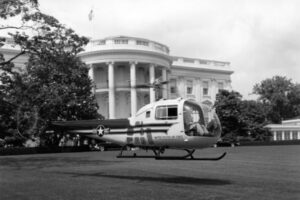
The Bell Helicopter Company of Fort Worth, Texas, manufactured two of the helicopters. They were delivered to the Air Force at Wright-Patterson Air Force Base on March 29, 1957. The two presidential H-13Js were nearly identical to the commercial Bell Model 47J Ranger. They were capable of carrying a pilot and up to three passengers. An enclosed cabin was built on a tubular steel framework with all-metal semi-monocoque tail boom. The main rotor was 37 feet 2 inches in diameter and tail rotor was 5 feet 10.13 inches, making the helicopter an overall length of 43 feet 3¾ inches with rotors turning. It stood 9 feet 8 inches and weighed 2,800 pounds.
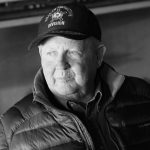 We all know about the Secret Service, but do we really know about them. They are always standing near the President and the other people they are sworn to protect, but most of the time they are virtually invisible. It’s not that we can’t see them, but rather that we don’t notice them, unless something goes haywire. Then their presence is very well known as the whisk the President to safety, while looking for the culprit who has dared to enter that guarded space that surrounds him.
We all know about the Secret Service, but do we really know about them. They are always standing near the President and the other people they are sworn to protect, but most of the time they are virtually invisible. It’s not that we can’t see them, but rather that we don’t notice them, unless something goes haywire. Then their presence is very well known as the whisk the President to safety, while looking for the culprit who has dared to enter that guarded space that surrounds him.
That is information we probably all know, but the Secret Service is much more. Founded in 1865, as an agency to stop counterfeiting, the past 150 years have seen many changes to that institution. Because it is their job to protect those they serve, the Secret Service agents must know a great deal about the people they guard, but they must also know a great deal about the essence of the political process.
Depending on their own interests, the President’s hobbies can be a pain for the Secret Service agents. If the President wants to go jogging, the Secret Service must go along, whether they like to jog or not. Also, the route must be checked, and can be a security nightmare. This applies to any trip the President makes as well. 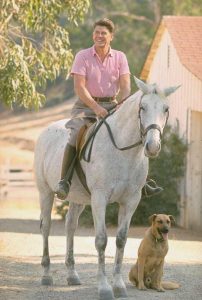 The hotel, route, and especially the areas where he might be spending time, have to be checked and re-checked. There is no room for error, because if a gunman finds a place to hide, the President’s life could be in grave danger.
The hotel, route, and especially the areas where he might be spending time, have to be checked and re-checked. There is no room for error, because if a gunman finds a place to hide, the President’s life could be in grave danger.
Guarding the President also meant guarding his family, and if the children were young, it was much like being a glorified babysitter. The agent had to go to friends’ houses, ice cream parlors, toy stores, and a number of other places. Not all first children are well behaved, and the Secret Service witnessed it share of tantrums. If the kids didn’t like how things were going, they simply called their parents, who often told the agents to “take the child wherever he/she wanted to go.” This usually served to make the kids more bold and belligerent. Of course, not all of the children were unruly, but I would imagine that more were, than weren’t.
The Secret Service had to remain bi-partisan, because no matter what their political views were, their job was to protect the President, regardless of his political affiliation. The Secret Service agents also had to deal with the reckless behavior of the Presidents they served. Some Presidents were promiscuous, and expected their agents to warn them if their wife was coming in. Others were reckless with their own safety, as was the case when John F Kennedy, who insisted on riding through Dallas in a convertible on that fateful November day in 1963.
 While guarding the President of the United States can be stressful and worrisome, it can also be very rewarding. Of course, the Secret Service agents travel the world with the President, and they have front row seats to some of the greatest events in history. Still, some Secret Service agents actually bond with the President. Such was the case with President Ronald Reagan and Agent John Barletta. Agent Barletta says of President Reagan, “We worked so well together. The whole relationship was a projection of him, how he was… He was a great guy to be around. I wouldn’t trade those years for anything.” For most of the Secret Service agents, it is an honor and a privilege to protect the President. It doesn’t matter if the work id time consuming, complicated, and stressful. These men and women feel born to protect the President.
While guarding the President of the United States can be stressful and worrisome, it can also be very rewarding. Of course, the Secret Service agents travel the world with the President, and they have front row seats to some of the greatest events in history. Still, some Secret Service agents actually bond with the President. Such was the case with President Ronald Reagan and Agent John Barletta. Agent Barletta says of President Reagan, “We worked so well together. The whole relationship was a projection of him, how he was… He was a great guy to be around. I wouldn’t trade those years for anything.” For most of the Secret Service agents, it is an honor and a privilege to protect the President. It doesn’t matter if the work id time consuming, complicated, and stressful. These men and women feel born to protect the President.
 Over the course of our nation’s history, we have managed to keep most of our presidents safe. Out of 45 Presidents of the United States, 4 were assassinated, and 6 others were shot while in office, but survived their attacks. Ronald Regan was the last United States President to be shot while in office. Reagan did not immediately realize that he had been shot…something that came as a shock to many. He was rushed to the hospital, where he underwent emergency surgery to remove the bullet and to repair his lung. The president remained in good humor, and he reportedly told his wife Nancy, “Honey, I forgot to duck” (a line first attributed to the boxing heavyweight Jack Dempsey when he lost the title to Gene Tunney in 1926), and to his doctors he said, “Please tell me you’re Republicans.” He was a loyal Conservative all his life.
Over the course of our nation’s history, we have managed to keep most of our presidents safe. Out of 45 Presidents of the United States, 4 were assassinated, and 6 others were shot while in office, but survived their attacks. Ronald Regan was the last United States President to be shot while in office. Reagan did not immediately realize that he had been shot…something that came as a shock to many. He was rushed to the hospital, where he underwent emergency surgery to remove the bullet and to repair his lung. The president remained in good humor, and he reportedly told his wife Nancy, “Honey, I forgot to duck” (a line first attributed to the boxing heavyweight Jack Dempsey when he lost the title to Gene Tunney in 1926), and to his doctors he said, “Please tell me you’re Republicans.” He was a loyal Conservative all his life.
John Hinckley, Jr. was a deranged individual with a crazed obsession for Jody Foster. Hinckley’s path toward the assassination attempt began in 1976 when he saw the movie Taxi Driver. In the movie, Robert DeNiro’s character, Travis Bickle stalks a Presidential candidate in the hopes that he will somehow impress and rescue a young prostitute played by Jodie Foster. Hinckley, who spent seven years in college without earning a degree or making a friend, added Foster to his list of obsessions, which also included Nazis, the Beatles, and assassins. In May 1980, Hinckley wrote to Foster while she attended Yale University, traveled there and talked to her on the phone at least once. Soon after, he began following President Jimmy Carter. In October, he was arrested at airport near a Carter campaign stop for carrying guns. However, the Secret Service was not notified. Hinckley  simply went to a pawnshop in Dallas and bought more guns. For the next several months, Hinckley’s plans changed daily. He pondered kidnapping Foster, considered killing Senator Edward Kennedy and began stalking newly elected President Reagan. Finally, he wrote a letter to Foster explaining that his attempt on Reagan’s life was for her. He kept abreast of the president’s schedule by reading the newspaper.
simply went to a pawnshop in Dallas and bought more guns. For the next several months, Hinckley’s plans changed daily. He pondered kidnapping Foster, considered killing Senator Edward Kennedy and began stalking newly elected President Reagan. Finally, he wrote a letter to Foster explaining that his attempt on Reagan’s life was for her. He kept abreast of the president’s schedule by reading the newspaper.
On March 30, 1981, Hinckley decided that he had found the perfect opportunity, and it turns out that he was right. Normally the President wears a bullet proof vest when entering and exiting engagements, but as it was only 30 feet to the limo, it was deemed unnecessary. Bad idea. Reagan stepped outside the Hilton Hotel in Washington D.C. where he had just addressed the Building and Construction Workers Union of the AFL-CIO. Hinckley was armed with a .22 revolver with exploding bullets and was only ten feet away from Reagan when he began shooting. Fortunately, he was a poor shot and most of the bullets did not explode as they were supposed to. Hinckley’s first shot hit press secretary James Brady in the head, critically wounding him, and other shots wounded a police officer and a Secret Service agent. The final shot hit Reagan’s limo and then ricocheted into the President’s chest. Hinckley had completely missed 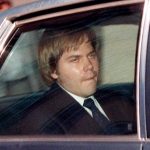 Reagan, but “got lucky” when the bullet ricocheted. How he managed that is beyond the imagination, and not so “lucky” for President Reagan who, as he said, “Forgot to duck.” I also find it amazing that President Reagan could keep his sense of humor. It shows me what a man of grit he really was.
Reagan, but “got lucky” when the bullet ricocheted. How he managed that is beyond the imagination, and not so “lucky” for President Reagan who, as he said, “Forgot to duck.” I also find it amazing that President Reagan could keep his sense of humor. It shows me what a man of grit he really was.
Hinckley was also wounded police officer Thomas Delahanty and Secret Service agent Timothy McCarthy. All of the shooting victims survived, although Brady’s 2014 death was later ruled a homicide 33 years after he was shot. Hinckley was later not found not guilty by reason of insanity. Hinckley was released from institutional psychiatric care on September 10, 2016, which I find astonishing. He currently lives with his mother.
 Everyone knows that President Lincoln was assassinated on Good Friday, April 14, 1865, while attending the play Our American Cousin at Ford’s Theatre in Washington, DC, as the Civil War was drawing to a close, but what you may not know is that this was not the first attempt on Abraham Lincoln’s life. The first attempt came one August night in 1864, just under a year before the successful attempt by John Wilkes Booth. It is unknown who the would-be assassin was in that earlier attempt, just that they very nearly succeeded.
Everyone knows that President Lincoln was assassinated on Good Friday, April 14, 1865, while attending the play Our American Cousin at Ford’s Theatre in Washington, DC, as the Civil War was drawing to a close, but what you may not know is that this was not the first attempt on Abraham Lincoln’s life. The first attempt came one August night in 1864, just under a year before the successful attempt by John Wilkes Booth. It is unknown who the would-be assassin was in that earlier attempt, just that they very nearly succeeded.
President Lincoln and his family often stayed at the Soldiers’ Home during the summer months due to the unbearable heat at the White House. President Lincoln often made the 4 mile trip from the White House to the Soldiers’ Home alone, and often late at night, an unheard of situation these days, with the secret service officers always shadowing the presidents, vice-presidents, and their families. As Lincoln was riding along that night, a shot rang out. Private John W Nichols, who was stationed at the Soldiers’ Home, rushed to the aid of the president, whom he found well, but missing his hat. President Lincoln told the private that the horse jerked upon hearing the gunshot, and his hat went flying. The private went to retrieve the hat for the president, and went he 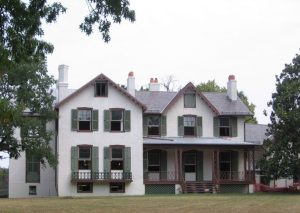 examined it, he found that it now had a bullet hole in it. It was an extremely close call, but President Lincoln requested that the matter be kept quiet, and Private Nichols didn’t tell the story until 1867. His tall hat had saved his life by causing the would be assassin to aim too high to hit his head.
examined it, he found that it now had a bullet hole in it. It was an extremely close call, but President Lincoln requested that the matter be kept quiet, and Private Nichols didn’t tell the story until 1867. His tall hat had saved his life by causing the would be assassin to aim too high to hit his head.
For America, this missed shot changed history. Had Lincoln been killed on that August night…even just that much earlier would have had devastating consequences for America. Hannibal Hamlin would have become a lame duck president. Hamlin was already off the Union ticket for vice president, having been replaced by Andrew Johnson. Hamlin would have faced strong opposition, because at the time, the Radical Democracy Party…an offshoot of the Republicans…and their nominee, John Fremont, had not yet dropped from the race. The Radical Democracy Party were even more strongly opposed to slavery than Lincoln, which is what led to their formation. Had the assassin aimed a bit lower in 1864, the election in November would likely have pitted Hamlin against Fremont and McClellan, the Democratic nominee, with Johnson perhaps running on the Union ticket.
Presidential elections always rest on who can win in an election, and in this case the winner would have turned 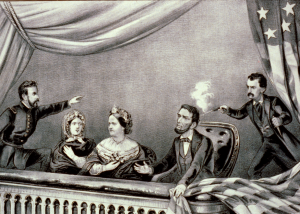 1864 America into a mess. Had the earlier would-be assassin’s shot been just a little lower, Lincoln, would have been succeeded by Hannibal Hamlin which may have given the upcoming election to Lincoln’s overly cautious former commander, General George McClellan. How either Hamlin, had he actually won re-election, or McClellan would have carried on the last year of the war, much less dealt with southern reconstruction, is a source for debate. Lincoln’s death, if combined with a lame-duck Hamlin and a conciliatory McClellan, might have encouraged the South to hold on just a while longer and resulted in an armistice rather than a victory, dramatically changing the history of America. I don’t think that anyone but Lincoln could have freed the slaves at that time.
1864 America into a mess. Had the earlier would-be assassin’s shot been just a little lower, Lincoln, would have been succeeded by Hannibal Hamlin which may have given the upcoming election to Lincoln’s overly cautious former commander, General George McClellan. How either Hamlin, had he actually won re-election, or McClellan would have carried on the last year of the war, much less dealt with southern reconstruction, is a source for debate. Lincoln’s death, if combined with a lame-duck Hamlin and a conciliatory McClellan, might have encouraged the South to hold on just a while longer and resulted in an armistice rather than a victory, dramatically changing the history of America. I don’t think that anyone but Lincoln could have freed the slaves at that time.

